What are the contents of Superficial Fascia of Neck?
Superficial fascia of neck like any other region of body contains loose connective tissue, cutaneous nerves, blood vessels and lymphatics like. In addition to that it contains a muscle called Platysma. It contains the following structures:
- Muscle – Platysma
- Cutaneous nerves of the neck: branches of cervical plexus
- Lesser occipital nerve (LON)( C2)
- Greater auricular nerve (GAN) (C2,C3)
- Transverse nerves of neck (TCN) (C2, C3)
- Supraclavicular nerves (SCN) (C3, C4)
- Motor nerve – cervical branch of facial nerve (supplies platysma)
- Superficial veins
- anterior jugular vein (AJV)
- external jugular vein (EJV)
- Superficial cervical lymph nodes
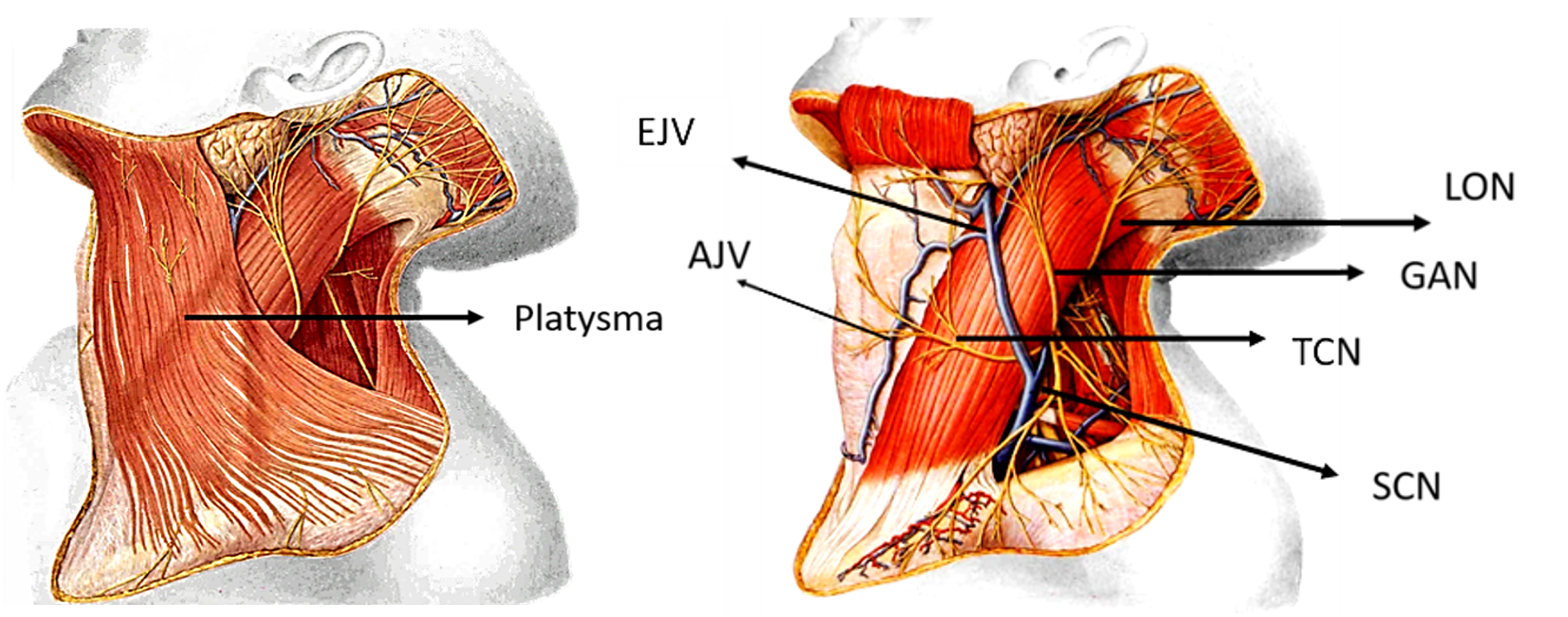
Origin, Insertion, Action and Nerve Supply of Platysma Muscle.
Platysma is a thin quadrilateral shaped muscle. It represents the panniculus carnosus muscle (muscle in superficial fascia) of lower animals. Its develops from 2nd pharyngeal arch and is therefore supplied by facial nerve.
Origin: It takes origin from the deep fascia covering the upper parts of pectoralis major and deltoid muscles.
Insertion: It is mainly inserted into the lower border of body of the mandible ( anterior fibers decussate with fibers of the other side before insertion). Few posterior fibers turn upwards and medially and are inserted into the angle of mouth through risorius muscle.
Nerve supply: Cervical branch of facial nerve supplies it.
Actions
- it depresses the mandible.
- it moves the angle of the mouth down and laterally as in expressing terror or horror.
- It releases the pressure of skin above the underlying veins, therefore helps in the venous return.
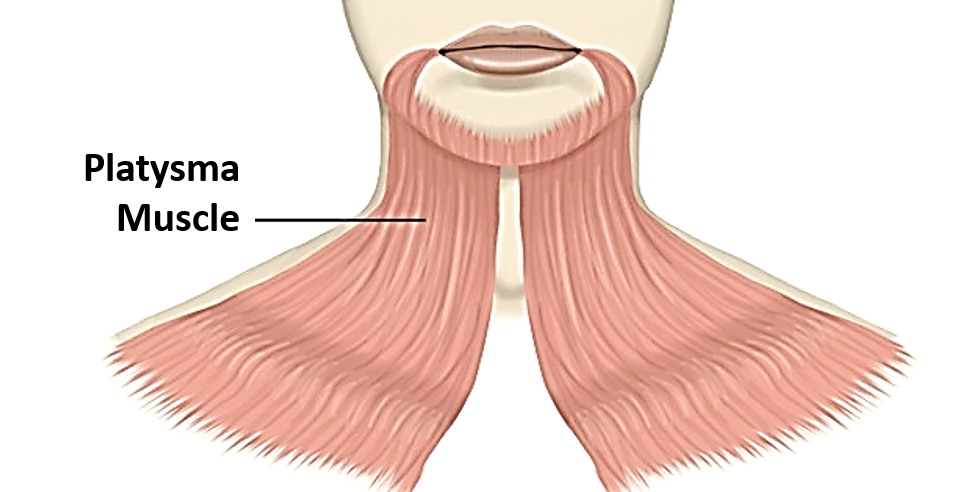
Name the Cutaneous Nerves of the Neck.
The skin on the front and the side of neck is supplied by 4 cutaneous nerves derived from ventral rami of C2 to C4 spinal nerves which are branches of the cervical plexus. These nerves radiate from near the middle of the posterior border of sternocleidomastoid muscle after piercing deep cervical fascia and are as follows:
- Lesser occipital nerve( C2): It ascend up along the posterior border of sternocleidomastoid and supplies the skin on the side of head behind the auricle and upper 1/3rd of the cranial (medial ) surface of auricle.
- Greater auricular nerve (C2,C3): It crosses the sternocleidomastoid muscle obliquely and reach parotid region, where it divides into anterior and posterior branches,. Anterior branches supply the skin over the angle of mandible. The posterior branch supplies the skin over the mastoid process and the medial and lateral surfaces of the lower 2/3rd of the auricle including ear lobule.
- Transverse nerves of neck (C2, C3): It passes horizontally across the sternocleidomastoid muscle towards the midline of neck and divides into ascending and descending branches. It supplies the skin of most of the front and side of the neck.
- Supraclavicular nerves (C3, C4): The three supra clavicular nerves viz. medial, intermediate and lateral supply the skin of the pectoral (till the level of 2nd rib) and shoulder region.
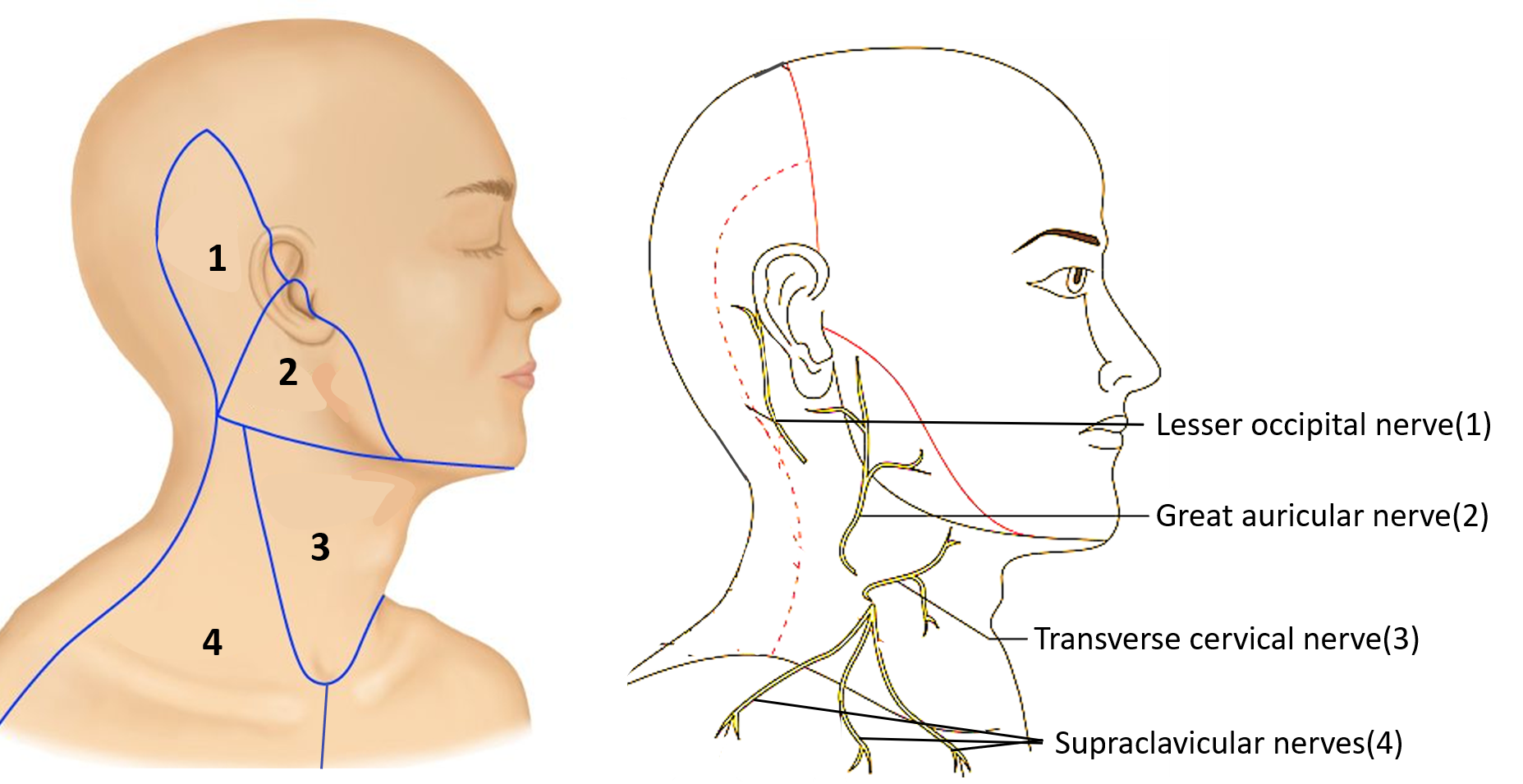
Describe the Formation, Course, tibutaries and termination of External Jugular Vein
External jugular vein drains blood from the greater part of face and scalp.
- Formation: Begins below the angle of mandible by union of posterior division of retromandibular vein and posterior auricular vein.
- Course and termination: It runs vertically downwards across the sternocleidomastoid muscle and deep to platysma. It pierces the investing layer of deep cervical fascia about 2.5cm above the clavicle and terminates in subclavian vein.
- Tributaries:
- Formative
- Posterior auricular vein
- Posterior division of retromandibular vein
- Other
- Posterior external jugular vein
- Oblique jugular vein
- Terminal
- Transverse cervical vein
- Suprascapular vein
- Anterior jugular vein
- Formative
- Valves: It has two valves:
- The lower is located as it enters into the subclavian vein.
- The upper is usually about 4 cm above the clavicle.
The part of vein between the two valves is often dilated, and is termed the sinus.
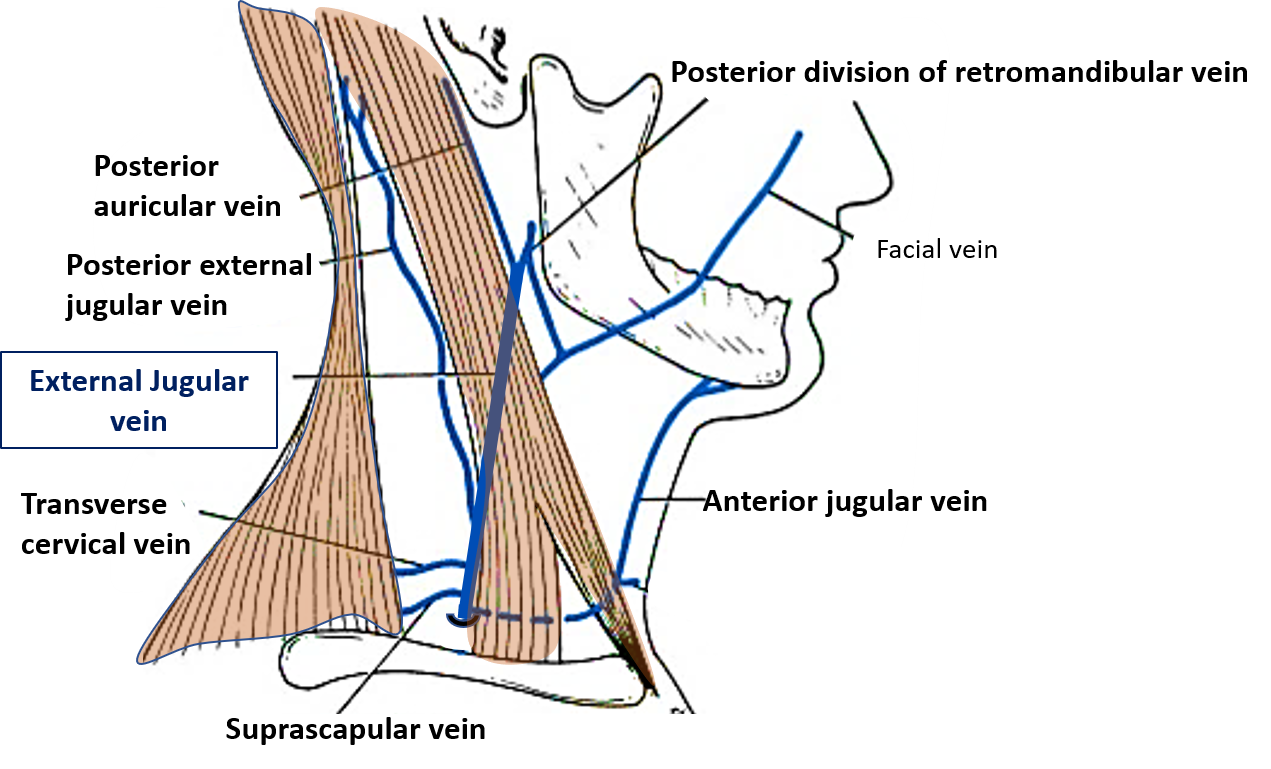
Applied Aspects
A cut in external jugular vein about an inch above the clavicle can be fatal.
Walls of the external jugular vein are adherent to margins of the opening in the deep cervical fascia where it pierces it (2.5cm above the clavicle). Therefore, if it is cut at this site, its walls cannot collapse which may lead to air embolism which can be fatal. In order to avoid it finger should be immediately placed here to occlude such wound.
External jugular vein serves as a Venous Manometer
Normally, when the patient is reclined at a horizontal angle of 30°, the external jugular vein, the level of the blood extends approximately one-third of the way upwards the neck.The blood level falls as the patient sits up, until it is no longer visible. Engorgement of veins may be found in patients with right heart failure due to rise in venous pressure.
External jugular vein can be used for catheterization
The catheterization of vein is done about in the middle of the of the cricoid cartilage and the clavicle. The insertion of the catheter should be done during inspiration so that the valves are open. Right external jugular vein is usually used as it is in direct alignment with the superior vena cava.
Enumerate the Structures Present in the Midline of Neck.
Following structures lie in the midline of neck from above downwards:
- Fibrous raphe: extending from symphysis menti to hyoid bone (mylohyoid muscles insertion)
- Hyoid bone
- Throhyoid membrane
- Laryngeal prominence (angle of thyroid cartilage)
- Median cricothyroid ligament
- Cricoid cartilage
- Cervical part of trachea
- Levator glandulae thyroidiae (remnant of thyroglossal duct)
- Anastomosis between anterior branches of superior thyroid arteries
- Isthmus of thyroid gland opposite 2nd– 4th tracheal cartilages)
- Inferior thyroid veins
- Thyroideaima artery
- Remains of thymus
- Jugular venous arch
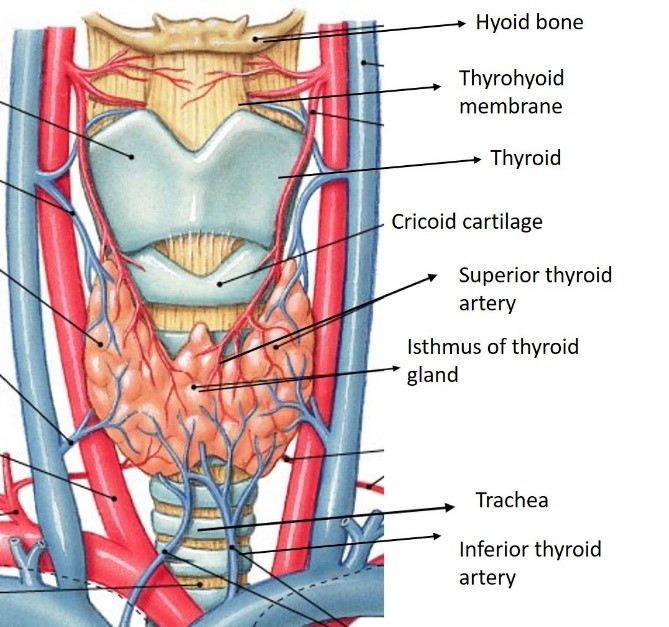
Applied Aspects
Knowledge of midline structures of neck is essential to:
- Differentiate between midline swellings Thyroid swelling from other swellings in the midline of neck)
- Perform tracheostomy (to make an opening in trachea), a life saving surgical procedure which is done in case of upper respiratory tract obstruction. It is most commonly done at the level of 2nd to 4th tracheal rings behind the isthmus of thyroid gland. The isthmus of thyroid gland is retracted upwards.
